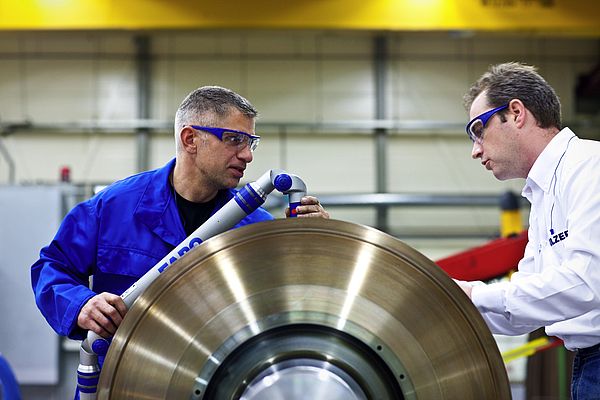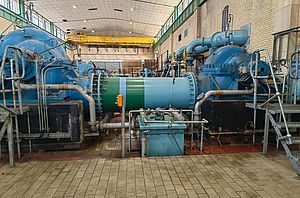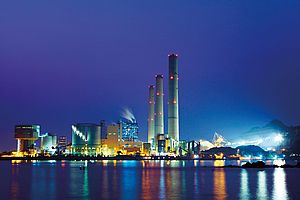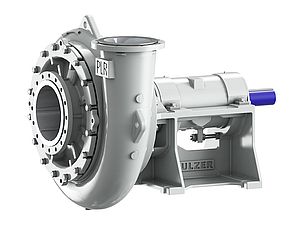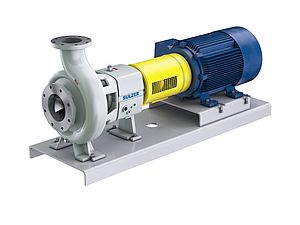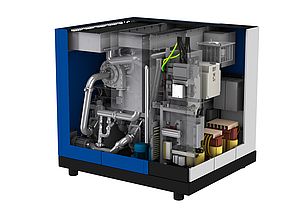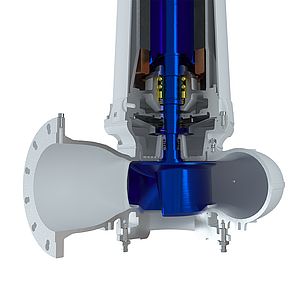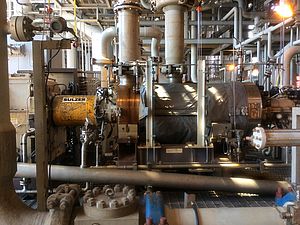The power generation sector, like many others, is under constant pressure to minimize downtime and maximize productivity. This means pump equipment is expected to run for longer periods with reduced maintenance intervals. When repairs are needed, they have to be completed within tight deadlines to comply with ever shorter and shorter maintenance windows.
With such a wide variety of pumping processes on-site, it is challenging to find a repair provider that has the necessary skills and experience to deliver full turnkey service. Darrell Howard, repair engineering manager at Sulzer's Houston facility, explains some of the key points that affect a successful repair project.
A great deal of the rotating equipment used in the power generation sector has been in place for many years. Pump equipment has been rigorously maintained and serviced in order to ensure reliable performance. As service and maintenance intervals increase, the attention to maintenance procedures has become more focused.
Employing a properly structured and managed program enables large sites, equipped with vast numbers of assets, to achieve high productivity levels while maintaining the long-term reliability of the plant.
Plant requirements
One of the most critical aspects of asset maintenance is understanding the requirements of each piece of equipment and the implications to the overall production process of taking the asset offline. In most cases, assets will have standby systems that can keep a process operational, even at a lower productivity rate. Ultimately, it is the experience and knowledge of the on-site maintenance engineers that provides the most useful information and by working closely with a repair provider, an efficient maintenance schedule can be developed.
The diversity of pump design and technology used within the power generation sector means that finding a repair partner can be a daunting task. At face value, the original equipment manufacturer (OEM) would seem to be the obvious choice to complete any repairs, however, across an entire facility there could be a wide range of pump designs which in turn, would mean coordinating a maintenance program with a large number of third party organizations. This carries a high burden and stress of administration and site coordination.
Therefore, selecting the most appropriate partner that delivers both OEM technology and the ability to support equipment of multiple manufacturers is key in achieving the maintenance goals of the business.
Service delivery
Assessing the skills and capabilities of a maintenance provider is crucial for determining the overall level of service that can be delivered. Providing preventative maintenance services is important, but when a component fails, the priority must be with delivering a fast turnaround and getting the equipment back into service. Today, with the number of complex pump designs in service, there is a real demand for a single source solution that has the capability to repair, re-engineer or remanufacture damaged components using in-house resources.
The alternative; using providers that sub-contract repairs to compensate for a lack of in-house facilities can increase the complexity of the project, degrade the communication process and ultimately lead to less dependable repairs.
Furthermore, those with experienced design capabilities can also integrate improvements into the design of components, enabling clients to benefit from the latest manufacturing technologies and improve both efficiency and reliability.
Developing a plan
When partnering with a maintenance provider, it is important to develop a program of planned actions as well as making contingency plans for unexpected failures.
By implementing a carefully organized plan it is possible to increase reliability and maximize productivity by utilizing a range of techniques and facilities. At the most basic level, condition monitoring is a vital tool that can use vibration, pressure and temperature monitoring equipment, plus manual thermal imaging cameras to provide vital information and indicate the early signs of an impending failure. Both of these predictive maintenance methods can be used without having to stop the equipment and they can provide regular data for a preventative maintenance program.
This forms the basis of a planned maintenance scheme that should be supported with additional information such as pump performance data which can also reveal the early indications of a performance issue. Collectively, this information enables the on-site maintenance team to schedule repairs during planned shutdown periods, minimizing the impact on productivity.
However, despite this, component failures will still occur and it is the ability of the repair partner to react quickly and deliver a solution that will determine the long-term viability of any maintenance agreement.
Sulzer, for example, recognizes this crucial aspect of the partnership and has developed an internal communication structure that allows a local service center to deliver the full range of technical services to its clients, while drawing on Sulzer's global engineering and logistics resources.
Conclusion
In today's world of large scale pump maintenance it is essential for repair specialists to have a wide range of skills and adaptability in order to deliver a comprehensive service. Equipment is becoming more complex and the facilities required to maintain them, more expensive. Although technology has evolved since much of the equipment in the power generation sector was manufactured, it is possible, with the right engineering expertise, to improve reliability and efficiency by remanufacturing certain components as part of the regular maintenance program. In the long term, this helps to improve productivity and reduce the likelihood of unexpected breakdowns.


